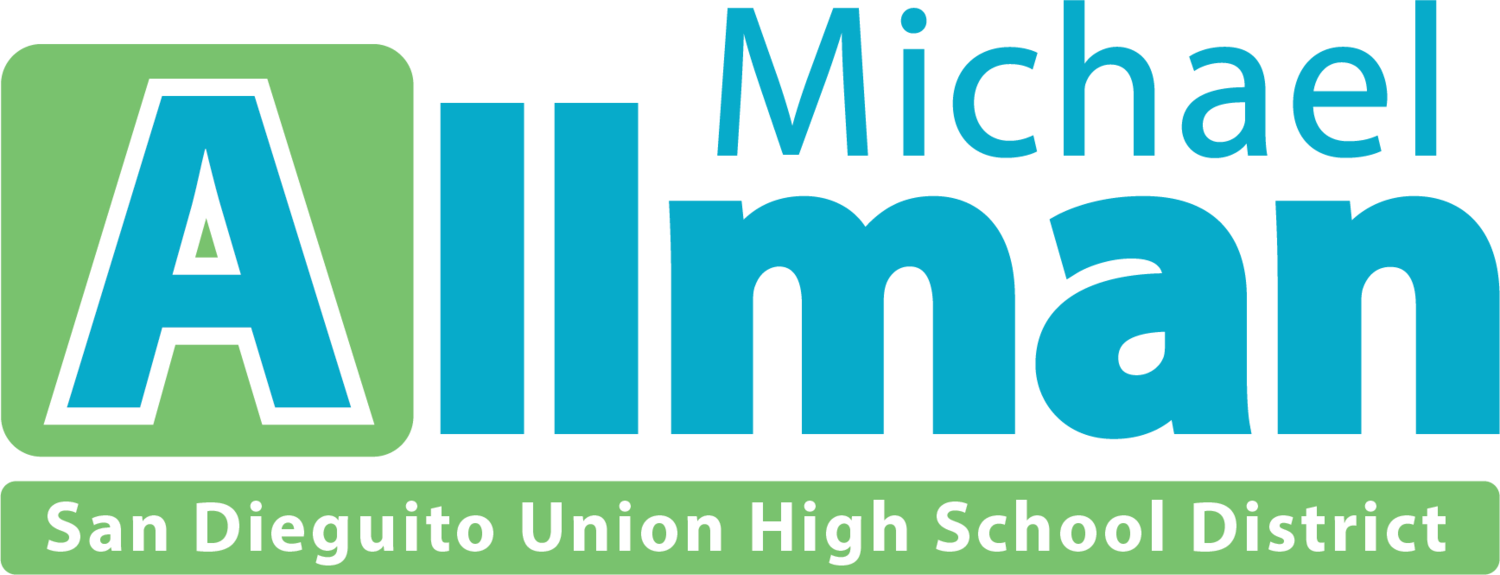Public comment process remains controversial
Adam Bishop appointed Interim Principal at Carmel Valley Middle School
California Standardized Test Results (CAASPP) reviewed
Bus purchase fails to obtain Board approval
Public Comment Process Remains Controversial
Once again members of the public came to the meeting to complain about the Board President moving the time for general non-agenda public comments to the end of the meeting. Someone who wants to speak to the Board must now wait until the end of the meeting, which is an unknown time and can be as late as 10pm. Moving the comments to the end of the meeting does not save the Board any time, but it does make it inconvenient for the public speakers. Board President Viskanta stated that the reason for making this change was to allow the Board to complete its business first. I wouldn’t be surprised if this continues to be a topic of concern by members of the public at future meetings.
Adam Bishop appointed Interim Principal at Carmel Valley Middle School
The Board approved the appointment of Adam Bishop, currently the Assistant Principal at San Dieguito Academy, to Interim Principal at Carmel Valley Middle School through the remainder of the school year.
California Assessment of Student Performance and Progress (CAASPP)
The initial results of the CAASPP standardized tests conducted last spring were recently released, and staff, led by Bryan Marcus, reviewed the District-wide results with the Board. In summary, our school district ranks near the top among all public school districts in California, but we have a wide disparity in test results across our schools. In one case, less than half of our 11th grade students meet math standards. While the presentation at this meeting was an overview of the District, Mr. Marcus will bring the data back to a future meeting to drill down school-by-school when more detailed results and data tables are released by the State.
Divided Board Rejects Staff Recommendation to Purchase Three New Diesel Busses
In a surprising development, Board Trustees Viskanta, Smith, and Young voted to reject staff’s recommendation to purchase three new diesel school busses. Trustee Viskanta stated that her decision was based on the climate impact of the diesel busses and her preference that all new purchases be all electric busses. Trustees Smith and Young did not provide their reasons for rejecting staff’s recommendation.
Antonio Perez, Director of Transportation, emphasized that several of our existing busses are old and are becoming more difficult and expensive to maintain. Mr. Perez, along with Assistant Superintendent Tina Douglas and Superintendent Staffieri, spent a considerable amount of time to answer all trustee questions. They explained that by purchasing three new busses before the end of 2023, our District can replace these older busses with new, safer, and more efficient busses, and ensure we can meet our transportation needs for the coming years. We currently own 17 diesel busses with 11 of those 17 at 20-25 years old. Parts for them are getting harder or are impossible to find. Presently, one needs a new engine.
School districts across California are scrambling to buy new busses before year-end, after which State regulations will prevent the sale of anything but electric busses.
By piggybacking on other district’s bus orders, we can buy the three needed busses at a discounted price of about $230,000 each.
Because a Board majority voted down staff’s recommendation, the District will now be forced to purchase electric busses for our future needs, which currently cost about $550,000, for an additional cost of $320,000 per bus. For three busses, this is about an extra million dollars of expenses, at a time when we continue to forecast budget deficits.
Whatever anyone may think about the impacts of carbon dioxide on climate change and how the United States should address this issue, one thing everyone should agree on is that any impact of carbon dioxide in the atmosphere is a global issue and depends on total global emissions.
The carbon dioxide emissions around the world total approximately 40 billion tons per year. The impact of three additional busses is about 1 billionth of that amount. To put that in perspective, there are about 8 billion people in the world, so it is a bit like trying to solve overpopulation of the planet by reducing world population by 8 people. Even that may be overstate the potential climate impacts, because if we don’t buy these three busses someone else likely will, and any climate benefit could go to net zero.
Besides the extra expense and the negligible climate impact, there are other issues with converting immediately to an all-electric fleet. Electric busses do not currently have the range of diesel so they can’t be relied on for longer round trips for athletic teams, clubs, competitions, or other events outside our district. That means our older, dirtier, more unreliable busses will be on the road for those trips. Even if needed electric charging stations could be found near the destination outside the district (they are not yet readily available everywhere), chargers have not all been standardized, so this makes the logistics even trickier. Electric busses also pose a challenge during wildfires, power shutoffs, and high temperatures. School busses can be used during evacuations, but electric vehicles are often requested to not charge so the electric grid isn’t overburdened.
As a result of this vote, we will pay an extra million dollars of taxpayer money when we buy all electric busses for no climate benefit and poorer performance. Trustee Anderson and I tried to talk our fellow board members out of this decision, but we were unsuccessful, and I believe that staff was surprised as well.
I’m not sure if staff is willing to bring this back for reconsideration at the December meeting (the last chance to change our minds) now that there is time for our Board to become better educated on this issue.
